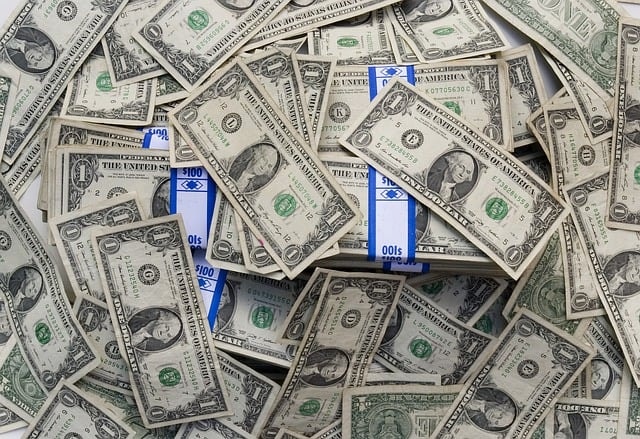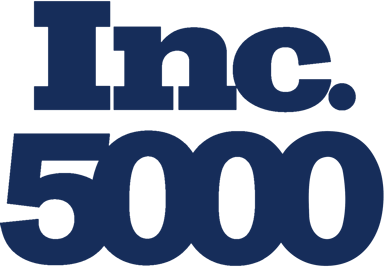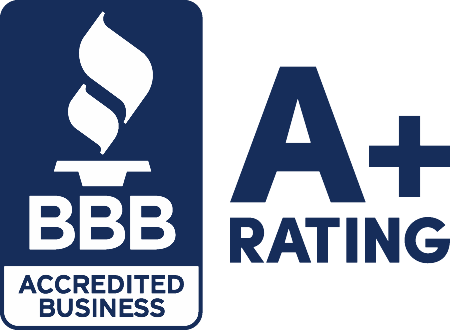What are SBA loans and how do they work?
SBA loans are various small business financing programs that allow small businesses to access capital. Features of SBA loans include high borrowing amounts, extended repayment terms, and some of the lowest repayment costs on the market. The US Small Business Administration (SBA) oversees the program.
The SBA is a federal government agency that promotes and supports small business owners. The agency provides numerous resources and training materials in addition to administering the SBA loan program. The SBA does not service the loans or provide the funds.
Small business owners apply to an approved SBA lender, which can be one of three types of financial institutions: a commercial bank, a credit union, or an alternative business financing facilitator, such as United Capital Source. Lenders must apply to the SBA for approval to offer SBA loans.
The SBA partially guarantees the loans (up to 85%) and limits how much interest lenders can charge. It also provides guidelines on underwriting and approving loans. With backing from the federal government, lenders take less risk, which is why they can offer longer terms and reduced interest rates on large borrowing amounts.
Most SBA loans have monthly payments. The SBA loan program consists of the following loans:
-
SBA 7(a) loans (the most common)
-
SBA Export loans
What are the pros & cons of SBA Loans?
SBA loans are often considered the “gold standard of small business financing.” In addition to the large loan amount options and favorable rates and terms, business owners can use SBA loan funds for almost any business purpose.
However, like any financing program, SBA loans also have drawbacks. Qualifying for an SBA loan is challenging, the application process is tedious, and it can take weeks or months to receive funding.
Here is a quick summary of the benefits and drawbacks of SBA loans.
Pros & Cons
Pros:
-
Large borrowing amounts – up to $5 million.
-
The SBA partially guarantees the loan.
-
Low interest rates and long repayment terms.
-
You can use the funds for almost any business purpose.
Cons:
-
Complex application with exhaustive documentation requirements.
-
Difficult to qualify.
-
Long funding time (60-120 days).
-
Almost always requires collateral and a personal guarantee.
-
Most SBA loans require a down payment of at least 10%.
What is an SBA Loan Default?
Before discussing SBA loan default, it’s essential to understand the distinction between default and delinquency. Each lender and SBA loan has different policies regarding delinquency and default, so it’s necessary to understand the terms of your loan agreement, which includes information about missed payments. Your lender makes the day-to-day servicing decisions for your SBA loan, not the SBA.
SBA Loan Delinquency
Your SBA loan is considered delinquent, or in delinquency, when you miss your SBA loan payments. Some lenders will provide a 10-day grace period on late payments, but should you exceed that, you’re in delinquency. If possible, make immediate repayment to avoid further issues. You must submit paperwork proving your financial situation when unable to pay the SBA.
Some lenders will try to work with you when you’re late on payments. The lender may contact you to determine the reason for the missed payment and review options to help you get back on track.
Being proactive is essential when you know you’ll miss a payment. The best course of action is to contact the lender and inform them of the situation. Sometimes, the lender might discuss repayment options, such as developing an alternative payment plan.
SBA Loan Default Process
Once you miss enough payments, or a missed payment persists for a long enough period, the lender marks the account as being in default. Typically, “default” means the lender has determined that your business is either incapable of or unwilling to repay the loan.
Again, each lender and loan agreement specifies the threshold for when a missed payment results in a default. Failure to make payments or arrangements with your lender will trigger a default status. Each lender’s policy differs, but most wait 90-120 days before beginning the default process. There are serious consequences for defaulting on a loan.
What happens when you default on an SBA Loan?
Your SBA loan goes into default when you repeatedly fail to meet the legal terms of your business loan agreement. Your SBA lender will likely contact you to inform you of your delinquency and insist that you repay your debt.
The consequences of defaulting on an SBA loan can be serious. When the lender initiates the default process, a domino effect is set in motion. Both your lender and the SBA will attempt to collect or settle the outstanding loan balance. Legal actions may also be involved.
Drop in Credit Rating
The first thing to happen is that your business credit takes a significant hit. This will make it challenging to receive business financing in the future. Defaulting on your SBA loan can significantly impact your personal credit score.
The Lender Seizes Assets Pledged as Collateral
Most SBA loans require some form of collateral, which can be liquid assets, such as cash in your business bank account, or tangible assets, like business equipment or real estate. The lender will seize any collateral that you used to secure your SBA loan and sell it to recover its losses.
The lender can take possession of your personal assets to recoup their loss if your business collateral is insufficient. The lender can also claim and sell your personal assets if a personal guarantee was signed.
Nearly every SBA loan also requires the business owner(s) to sign a personal guarantee. SBA loans under $150,000 usually don’t require collateral but do require a personal guarantee.
The lender can come after the personal assets of each business owner who signed a guarantee. Your house and other assets become liable for forfeiture if you go into default. The lender might also garnish your wages.
Depending on the amount of debt owed, your business may need to cease operations and liquidate any remaining business assets. Note: The SBA disaster loan program is the only SBA loan directly administered by the SBA and doesn’t involve a lender.
The Lender Goes to the SBA
One of the benefits of the loan program is that the SBA guarantees a portion of the loans. However, as you can see from the above actions, the lender only goes to the SBA for the guaranteed portion after it has exhausted all other options to recoup losses from the borrower. If your loan defaults, the lender files a request to seize the collateral you put up to secure the loan.
If the assets the lender seized do not cover the loan costs, it will then file with the SBA for the guaranteed portion minus any collateral. Once the SBA settles with the lender, the SBA will come to you for repayment of the money it paid your lender.
The SBA Sends a Demand Letter
Once the SBA pays the lender, it will attempt to collect payment from you. In most cases, you’ll receive a 60-day demand letter. This is a legal document that outlines your financial obligations. Sometimes the demand letter will include an offer in compromise. If your business has not already done so, it will most likely be forced to cease operations at this point.
Failure to respond to the SBA’s demand letter can result in referral of your case to the Treasury Department. The SBA will hold you responsible for repayment even after the lender has been repaid through its guarantee.
Attempt to Settle with an Offer in Compromise
Whether it’s included in the letter or you send one on your own, an offer in compromise is a proposal to settle the debt by paying a percentage of what’s owed, usually in a lump sum. In many cases, the SBA is willing to work with borrowers to settle the debt for less than what’s owed.
For the SBA to approve your OIC, you’ll need to prove that you cannot repay the money you owe within a reasonable time frame. This typically involves documentation related to your personal finances. Your business is only eligible for an OIC if it has stopped operations, liquidated its assets, and used the funds from liquidation to reduce your debt.
The OIC settlement partially depends on your personal financial situation. Declaring bankruptcy will discharge most SBA business loans, which can impact the offer-in-compromise process.
However, the SBA may reject your offer in a compromise. If you ignore the 60-day demand letter or cannot come to a compromise with the SBA, your loan account will be transferred to the U.S. Department of the Treasury.
Collections from the U.S. Treasury Department
The law states that the Treasury Department must handle collections when any federal government agency is owed a debt. When your defaulted SBA loan progresses to the Treasury Offset Program (TOP), you’ll have little recourse to avoid seizing your personal assets.
Since it’s a government agency, it does not need to get a court order to take actions such as:
-
Garnishing wages.
-
Withholding federal income tax refunds.
-
Garnishing social security or other retirement savings.
-
Offsetting your bank account(s).
There is no statute of limitations for SBA loan debt, as the federal government is the owner of the debt. You might be able to settle with the U.S. Treasury Department, but it is unlikely.
Frequently Asked Questions
Here are some of the most common questions about defaulting on an SBA loan.
Does the SBA forgive loans?
SBA loan forgiveness is not available per se. There are two situations where you could end up paying less than what’s owed. The first is the aforementioned offer in compromise. Sometimes the SBA will settle for less than the total that’s owed. The second circumstance is if you’re forced to file for bankruptcy. SBA loans are discharged in bankruptcy, but this is a worst-case scenario solution.
What is an Accidental Default?
Accidental default refers to defaulting on a loan for reasons other than failure to pay. Your SBA loan agreement includes specific terms and conditions that you must meet throughout the life of the loan.
For example, SBA loans don’t allow “stacking,” which is when you carry more than one loan at a time. If you have an SBA loan and take out another business loan, you’ll be in default for violating loan terms.
What are the best strategies to avoid defaulting on an SBA Loan?
The most important thing to do is to be proactive in finding a solution when facing a potential default. Begin by reviewing your cash flow statements and business expenses to identify areas where you can reduce costs, thereby freeing up cash flow to cover your loan payments.
If you can’t find a cash flow solution and know you’ll miss payments, reach out to your lender. You might feel awkward about the conversation, but your lender has dealt with this situation before.
Most lenders would prefer to work with you to find a solution rather than to begin the tedious task of processing a loan default. Early and transparent communication is key to working with a lender to find an alternative solution.
Seeking professional help from accountants or attorneys can provide guidance on managing SBA loans and avoiding default. Extending the loan term can reduce monthly repayments and alleviate financial pressure.
Does defaulting on an SBA Loan mean I have to go to court?
An SBA loan default could end up in litigation, but there are steps you can take to avoid this drastic outcome. If you follow the strategies above, you may be able to avoid defaulting on your loan or at least find a solution that prevents litigation. The government does not need a court judgment to initiate wage garnishment for SBA loans.
One of the essential pieces of advice we can give is not to ignore communications. Facing a potential default is stressful, and some people want to avoid dealing with it. But that will only make things worse.
Ensure you respond to communications from your lender or the SBA regarding missed payments and default. Specifically, you have 60 days to respond to the SBA’s demand letter. Failing to respond on time could result in a court appearance.
SBA Loan Default – Final Thoughts
SBA loans are the most advantageous small business financing products available due to their high borrowing amounts, low interest rates, and extended repayment terms. However, while you may have taken out a loan with the best intentions, sometimes things don’t work out as planned. That’s life; it happens.
If you face a potential SBA loan default, it’s important to know you’re not the first and won’t be the last person in this situation. The SBA and SBA-approved lenders have established experience and procedures for handling loan defaults. Your best strategy to protect yourself is to proactively work with the lender and the SBA to find a solution when you know you won’t be able to make your loan payments.















